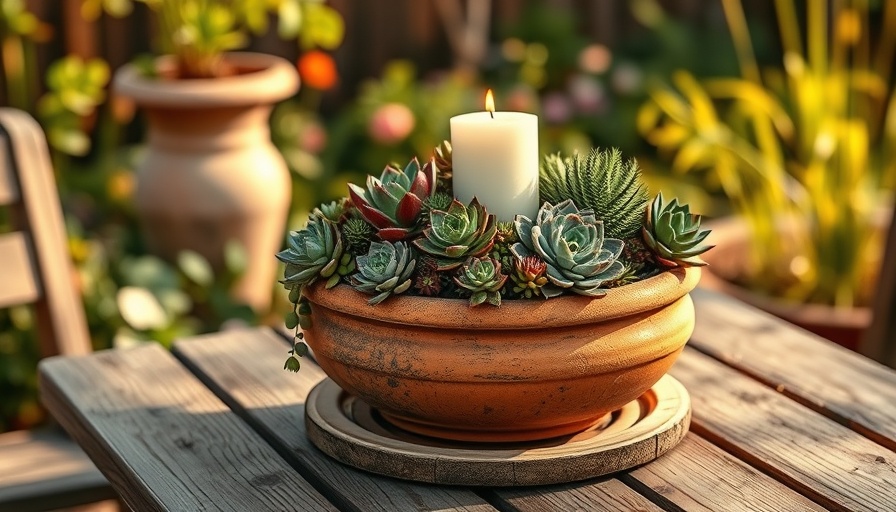
Transform Your Space: The Beauty of a Terracotta Pot Centerpiece
A stunning centerpiece doesn’t have to come with a hefty price tag. Sometimes the most memorable pieces are born from creativity and the simplest of materials. Imagine this: a terracotta pot succulent centerpiece effortlessly designed from leftover items around your garden shed. The perfect blend of artistry and functionality, it serves not only as a standout table decoration but also a conversation starter for outdoor gatherings.
The Practical Benefits of Using Succulents
Succulents have gained popularity in recent years, and for good reason. Their ability to withstand harsh heat and drought conditions makes them ideal for outdoor arrangements, especially in the summer months. Unlike traditional flowers, they require minimal watering, freeing up your time while adding a vibrant touch to your décor. This makes succulents an excellent choice for those looking to create a beautiful yet low-maintenance centerpiece that lasts through the season.
Gathering Materials: What You'll Need
To embark on this delightful DIY project, gather the following materials:
- A wire hanging basket frame — these can often be found at local dollar stores.
- Varied sizes of terracotta pots that fit your design concept.
- Strong garden wire for securing the pots in place.
- A suitable plant tray to catch any excess water from drainage.
- Succulent potting soil and an assortment of succulents in colors and textures of your choice.
- Reindeer moss and a glass hurricane candle holder for added flair.
Your local garden center will be an invaluable resource for sourcing these materials, ensuring that your centerpiece is both beautiful and sustainable.
Step-by-Step Guide to Creating Your Centerpiece
Follow this simple process to create your own succulent centerpiece:
- Design Layout: Arrange the terracotta pots on the wire frame, experimenting with sizes and placements until you find a design that resonates with you.
- Secure the Pots: Using garden wire, thread through the holes in the pots and secure them to the wire frame. Ensure the center pot is stable but doesn't need wiring.
- Prepare for Watering: Line each pot’s drainage hole with newspaper or coffee filters to prevent soil seepage into your tray.
- Fill with Soil and Succulents: Pour succulent potting soil into each pot, adding in your selected succulents. Play with different arrangements for texture and color.
- Add Finishing Touches: Top off your design with reindeer moss and set a pillar candle within the hurricane holder for a charming glow during evening gatherings.
Voyaging into Creativity: Personal Touches Matter
What makes your succulent centerpiece truly unique is the way it reflects your personality. Consider incorporating items that represent your memories or hobbies. Perhaps you could add small decorations that remind you of cherished moments spent in your garden. Sharing these stories can elevate your centerpiece from just being a decoration to a heartfelt part of your outdoor experience.
Future Gardening Projects to Explore
The joy of gardening doesn’t stop with one project. The thriving community of plant lovers offers continuous inspiration for further experimentation. Here are some ideas for your next gardening project:
- Container Gardening: Discover how to utilize different containers to create beautiful vertical gardens.
- Herb Gardens: Learn how to start an indoor herb garden perfect for cooking.
- Flower Bed Ideas: Explore designs that can elevate your flower beds and create stunning visual interest in your yard.
Each new project allows you to learn and share with fellow gardening enthusiasts, fostering connections and creativity.
Final Thoughts: Engage with Nature and Your Community
Creating a succulent centerpiece is more than just a fun DIY activity; it’s a way to connect with nature and express your creativity. As you enjoy your centerpieces, consider the lessons learned from nurturing your plants and how those lessons can extend into other areas of your life. Remember, every small act of gardening has the potential to build relationships and foster a strong community connection.
So, gather your supplies, unleash your imagination, and embrace the creativity that gardening offers!
 Add Row
Add Row  Add
Add 




Write A Comment